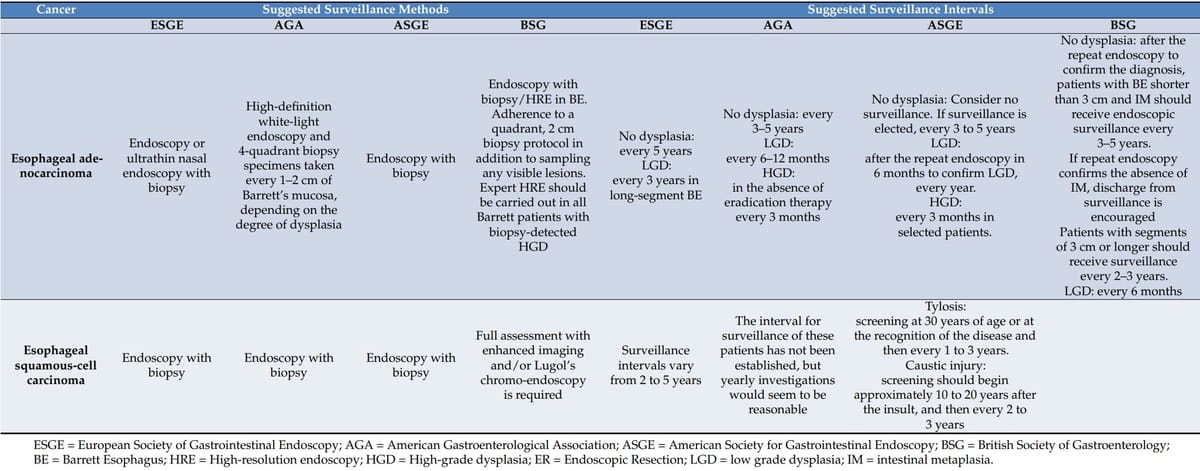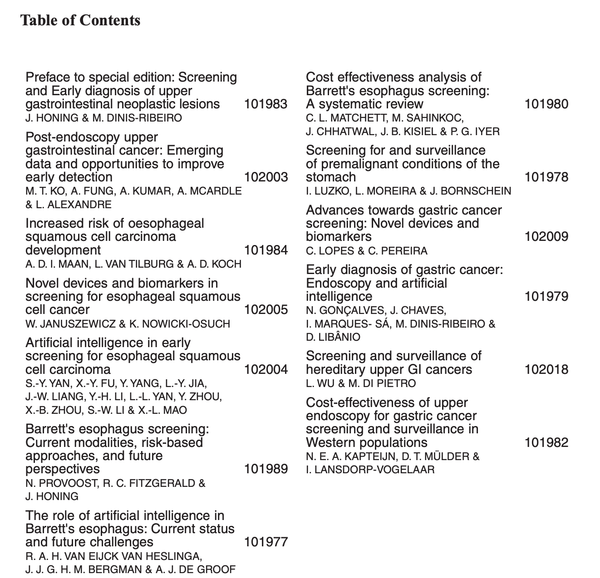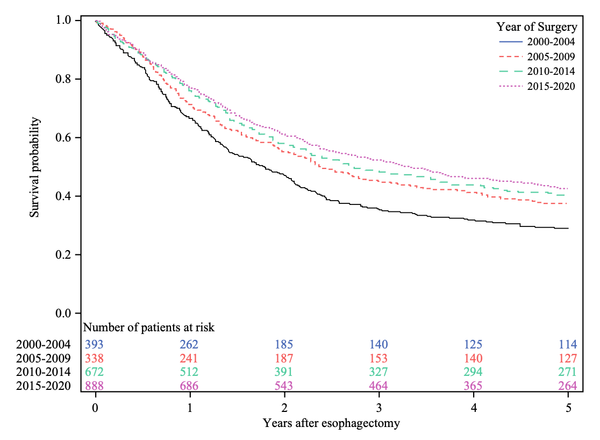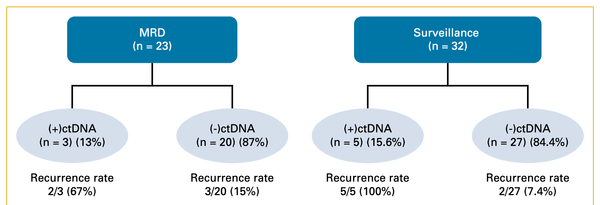Review of prevention strategies for esophageal cancer
A nice review of prevention approaches to both esophageal squamous cell carcinoma and adenocarcinoma. It includes a summary of surveillance methods and intervals recommended by four GI societies

Prevention Strategies for Esophageal Cancer-An Expert Review.
Marabotto E, Pellegatta G, Sheijani AD, Ziola S, Zentilin P, De Marzo MG, Giannini EG, Ghisa M, Barberio B, Scarpa M, Angriman I, Fassan M, Savarino V, Savarino E.
Abstract
In the last 30 years, we have witnessed a rapid increase in the incidence and prevalence of esophageal cancer in many countries around the word. However, despite advancements in diagnostic technologies, the early detection of this cancer is rare, and its prognosis remains poor, with only about 20% of these patients surviving for 5 years. The two major forms are the esophageal squamous cell carcinoma (ESCC), which is particularly frequent in the so-called Asian belt, and the esophageal adenocarcinoma (EAC), which prevails in Western populations. This review provides a summary of the epidemiological features and risk factors associated with these tumors. Moreover, a major focus is posed on reporting and highlighting the various preventing strategies proposed by the most important international scientific societies, particularly in high-risk populations, with the final aim of detecting these lesions as early as possible and therefore favoring their definite cure. Indeed, we have conducted analysis with attention to the current primary, secondary and tertiary prevention guidelines in both ESCC and EAC, attempting to emphasize unresolved research and clinical problems related to these topics in order to improve our diagnostic strategies and management.




